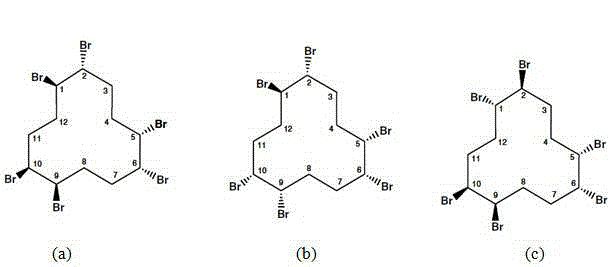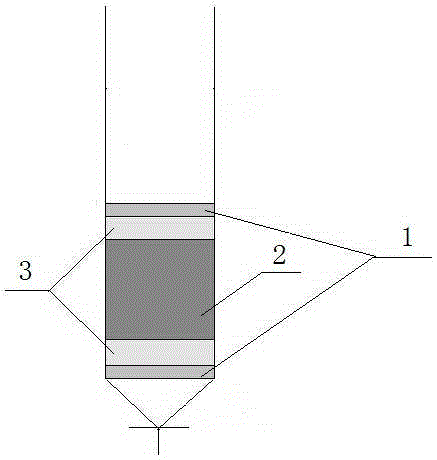Method for simultaneous determination of hexabromocyclododecane isomer and tetrabromobisphenol A in fat food
A technology of hexabromocyclododecane and oily food, applied in the field of detection, can solve problems such as inapplicability, and achieve the effect of saving solvent and optimizing pretreatment technology
- Summary
- Abstract
- Description
- Claims
- Application Information
AI Technical Summary
Problems solved by technology
Method used
Image
Examples
Embodiment 1
[0034] 1 Materials and reagents:
[0035] Silica gel: silica gel (SilicaGel) 60-200 mesh. Put the silica gel into a glass chromatographic column and wash it with methanol and dichloromethane successively, and the volume of the solvent used each time is about twice the volume of the silica gel. After rinsing, place the silica gel on an aluminum foil and let it dry naturally in a fume hood, then activate it at 130°C for 4 hours, put it into a ground reagent bottle, and store it in a desiccator.
[0036] α, β, γ-hexabromocyclododecane standard solution: purity greater than 99%, all 50μg / mL, dissolved in methanol.
[0037] α, β, γ- 13 C 12 - Hexabromocyclododecane standard solution: the purity is greater than 98%, all 50μg / mL, dissolved in methanol.
[0038] Tetrabromobisphenol A standard solution: purity greater than 99%, 50 μg / mL, dissolved in methanol.
[0039] 13 C 12 -Tetrabromobisphenol A standard solution: purity greater than 99%, 50 μg / mL, dissolved in methanol.
...
Embodiment 2
[0119] The comparative test of embodiment 2 different purification methods
[0120] The following sample pretreatment method and detection method are the same as in Example 1, and the purification method is as follows:
[0121] Method 1 Acidified silica gel column purification method: put a handful of cotton at the bottom of a clean solid phase extraction glass column, pour 1cm of anhydrous sodium sulfate, 5g of silica gel, 15g of 44% acidified silica gel, 5g of silica gel, 1cm of Anhydrous Sodium Sulfate. Lightly shake the tube wall with the ear wash ball to make the packing surface level, pour n-hexane to exhaust the air bubbles, and then activate the column with 200mL n-hexane for later use.
[0122] Preparation method of 44% acidified silica gel: Weigh the activated silica gel and gradually add concentrated sulfuric acid (the mass ratio of silica gel to sulfuric acid is 44 / 56), shake overnight until there are no lumps. After completion, put it into a ground reagent bottl...
Embodiment 3Zr
[0142] Example 3ZrO 2 / mSiO 2 Composite material reusability test
[0143] 10 g of zirconia-coated mesoporous silica material (ZrO 2 / mSiO 2 ) materials were washed with 20mL acetone / ammonia water (volume ratio 95:5), 20mL acetone, and 20mL n-hexane in turn, and could be reused 5 times. The results are shown in Figure 5 .
PUM
 Login to View More
Login to View More Abstract
Description
Claims
Application Information
 Login to View More
Login to View More - R&D
- Intellectual Property
- Life Sciences
- Materials
- Tech Scout
- Unparalleled Data Quality
- Higher Quality Content
- 60% Fewer Hallucinations
Browse by: Latest US Patents, China's latest patents, Technical Efficacy Thesaurus, Application Domain, Technology Topic, Popular Technical Reports.
© 2025 PatSnap. All rights reserved.Legal|Privacy policy|Modern Slavery Act Transparency Statement|Sitemap|About US| Contact US: help@patsnap.com



